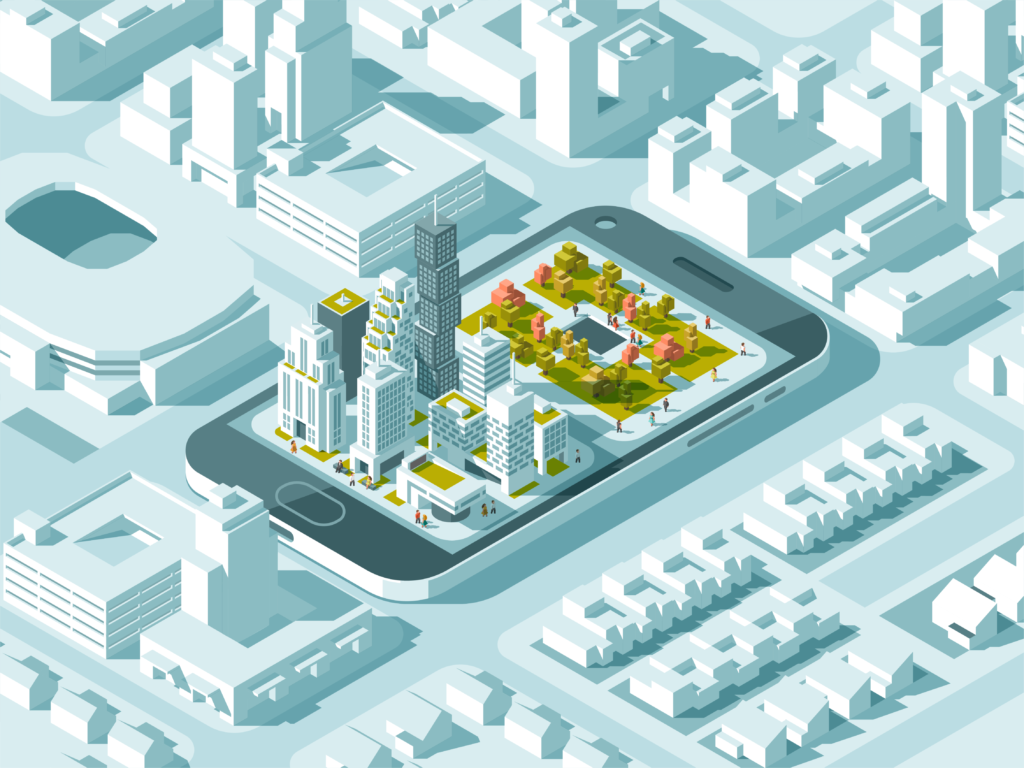27 Jul 2018
The Internet of Things (IoT) is an emerging class of technologies that’s already revolutionized the way we go about our daily lives — look no further than your smart thermostat and your WiFi enabled TV. In the United States alone, the value of IoT across various industries has generally been predicted to double in just five years, from 2017 to 2022:
- The market for consumer electronics is expected to grow from $90 billion to $180 billion
- Spending on transportation applications is expected to increase from $75 billion to $140 billion
With so much money at stake, some experts predict that IoT may be the catalyst for the next industry patent war. The industry’s rapid growth is creating exciting new challenges in protecting, enforcing, and licensing IoT patent rights.

WAIT — WHAT’S THE INTERNET OF THINGS?
Generally, IoT refers to interconnected physical devices that can automatically collect and exchange information over the internet or other data connections (like WiFi). That’s a broad definition, but IoT is a broad class of technologies that spans many industries.
With IoT, users no longer have to directly interact with a device in order for it to collect, process, and distribute data. IoT also connects entire systems of devices, enabling companies to gather large amounts of shared data, ostensibly to improve device performance and benefit users.
In fact, you’re probably already familiar with IoT devices! Well-known examples include:
- Home assistants like the Amazon Echo
- Wearables like the FitBit and Apple Watch
- Nest home thermostats
The IoT class of technologies is still relatively adolescent, but many businesses across diverse industries are aggressively pursuing patent protection — setting the industry up to face novel patent disputes down the line.
If you’re a tech company developing IoT technology, here are the top four challenges you should be prepared to face as you think about patent strategy.
CHALLENGE #1: CLAIM SCOPE
IoT systems often involve multiple devices working together to achieve a certain outcome. As a result, there are often many different ways you could claim the same IoT innovation in a patent application:
- Device or apparatus claims that cover the IoT device itself (e.g., components that may be controlled by a processor)
- Method claims that cover the way the IoT device operates
- Method claims that cover the way IoT devices communicate with each other or with other types of devices (e.g., routers, servers)
- Software-style claims that cover the software-implemented processes performed by the IoT device
- Software-style claims that cover processes performed by a remote server (e.g., “in the cloud”) that communicates with the IoT device
- System-level claims that cover multiple IoT devices interacting with each other (e.g., watch and phone; hub and beacons; router and WiFi devices)
For cost reasons, most patent applications contain two to four independent claims, so you can’t always take an exhaustive approach to cover all possible claim types.
HOW TO CHOOSE THE RIGHT CLAIM TYPES FOR YOUR INVENTION
To figure out the best type of claims for each particular innovation, consider the following factors:
- Your business model
- If your company sells the actual IoT device, you would often prioritize device claims and method claims the cover how the device operates
- If your company only sells software, prioritize software-style claims
- If your company is a backend service provider, you might prioritize the server side “in the cloud” processes
- Where the point of novelty lies
- If the invention deals with how the IoT device operates, then you might not have a viable claim for server-side functionality
- If the invention is software-implemented, you’ll want to consider software-style claims
- The relative licensing value for each type of claim
- You might be able to license a software claim across multiple different industries (e.g., for operation on multiple different types of devices)
- The identity of the infringer
- The general rule of thumb is that, if you have to choose, you’d rather have a claim that you can assert against your competitor (as opposed to your customer or end users)
ACCOUNTING FOR UNEXPECTED PRIOR ART
Because there’s a huge amount of innovation in the IoT space right now, it’s possible that during patent prosecution, you might run into prior art that’s currently unknown (e.g., unpublished patent applications). Your claim strategy should take this into account. For example:
- You could build in several backup positions, either as dependent claims or in the specification
- You could start off with a focused claim set, and leave yourself the option of pursuing broader claims in a continuation

HOW TO DETERMINE CLAIM SCOPE: A REAL-LIFE EXAMPLE
As an example to show how you might determine the most appropriate claim scope for your invention, we can look to Babelfish earbuds (which were listed by the MIT Technology Review as one of the year’s 10 breakthrough technologies).
Babelfish earbuds offer the wearer close to real-time translation. It’s likely that some of the translation is (or could be) performed in the cloud. So, Babelfish earbuds demonstrate the problem of claiming the location of any process within an IoT environment.
What does this mean?
The Babelfish earbuds probably operate in a similar way to the Amazon Echo: The Echo does some speech processing on-chip, but sends most of your speech content to the cloud for processing on a server elsewhere.
In simpler terms, the device sitting in your house does the heavy lifting to figure out what you’ve said, but then Alexa’s response is generated on a different, remote server.
So if you’re claiming Babelfish earbuds in a patent application, you’ll have to take into account where certain processes are executed, or where other people might execute them on their competing device. Otherwise, a competitor might be able to design around your patent, for example, by performing a certain process on-chip, instead of in the cloud.
CHALLENGE #2: JOINT INFRINGEMENT
Because IoT technology is interactive and often implemented by system components in multiple different locations, you could end up with more than one party infringing your patent rights: The various devices or technology that create the IoT system could be sold, owned, and operated by different companies.
Joint infringement deals with the question of whether there can be infringement liability when the infringement is split among multiple parties, actors or devices.
The current rule, established in Akamai v. Limelight, is that there may be infringement liability when the steps of a method are performed by multiple parties if a single defendant “exercises ‘control or direction’ over the entire process such that every step is attributable to the controlling party.” (This is, obviously, a really high bar to meet.)
OVERCOMING ISSUES OF JOINT INFRINGEMENT
Typically, you’d overcome issues of joint infringement by carefully drafting claims from the perspective of only one device in the IoT system.
But drafting that type of claim may not be possible, depending on the state of the art and whether the invention is even patent-eligible. If that’s the case, you should instead try to claim the components that would most likely be sold or operated by your competitors.

HOW JOINT INFRINGEMENT COULD OCCUR: A REAL-LIFE EXAMPLE
For a real-life example that shows how the various claims strategies to overcome joint infringement might play out, we can look to smart city schemes (another breakthrough technology recognized by MIT Technology Review).
Broadly, “sensing cities” use smart sensors as municipal infrastructure. In patenting the sensing city, one could claim:
- The smart sensor itself
However: That likely wouldn’t capture the big picture idea of how it’s being used. And the smart sensor by itself might not be novel, and therefore not patentable. - The “cloud” perspective (which describes how the data from the sensors is used)
However: It might be much more difficult to detect infringement, because you’re basically claiming a software process running on a private server. - The whole system (which covers the sensors and the servers operating together)
However: You might end up with a divided infringement problem where one entity owns or operates the sensors, and another entity aggregates or processes the data.
Sometimes overcoming this problem requires compromise — maybe you simply can’t claim the invention from the perspective of a single device. But in most cases, smart patent counsel can find a way to craft independent claims that don’t have a divided infringement problem, and that’s usually a strong approach.
CHALLENGE #3: SUBJECT-MATTER ELIGIBILITY
IoT technology typically contains some computer-implemented functionality, and so could face issues in the wake of Alice — a 2014 Supreme Court decision stating that abstract ideas implemented on a computer aren’t patent-eligible. (Learn more about the ramifications of Alice.)
According to Alice, your claims cannot simply recite something abstract, but must contain an “additional element” that amounts to “significantly more” than the abstract idea.
There are several ways to overcome this challenge. For example, you might need to argue that:
- The invention is rooted computer technology, for example, as in DDR Holdings LLC v. Hotels.com LP
- The technology specifically improves the way computers operate, for example, as in Enfish LLC v. Microsoft Corp. et al.
These can be fairly complex legal issues, but in the context of patent prosecution, the primary task is to understand how to work with the patent office to find a workable solution. So if you’re endeavoring to patent IoT technology, it’s important to hire a legal team that has experience overcoming Alice rejections.
CHALLENGE #4: PATENT QUALITY
Currently, a lot of tech companies are just stockpiling patents — but a lot of these patents don’t contain strong claims, meaning that they either don’t cover anything valuable (because the claims are too narrow) or would be vulnerable to prior art challenges in, say, IPR proceedings(because the claims are overly broad or nebulous).
But as the patent office and district courts continue to sort through the mess created by the Alice decision, it’s likely that the quality of IoT patents will improve as more companies start putting a stronger emphasis on drafting robust patent applications that will hold up under close scrutiny.
In addition, more companies may begin using trade secrecy to protect technology that doesn’t need to be publicly disclosed. For example, server-implemented processes can often be protected as trade secrets.
ARE YOU READY TO PATENT YOUR IOT TECHNOLOGY?
You’ve familiarized yourself with the top challenges currently facing IoT patents. But are you prepared to tackle the actual patent process?
Download our free checklist, “Are You Ready to Start the Patent Process,” to find out where you stand — and what to do if you’re still missing something essential.
IS IT TIME TO START BUILDING YOUR PATENT PORTFOLIO? WE’LL HELP YOU FIND OUT!
When you’ve got game-changing technology on your hands, you can’t wait to share with the world — which also means protecting it from competitors.
But is now the right time to start moving forward with the patent process? Download our FREE checklist to find out. Learn the following:
- What does a patent really do?
- Does your invention have substance?
- Do you have all the necessary resources lined up?
- Is your business structure — and all the logistics — ironed out?
- How should you proceed if you’re not quite ready to begin the patent process?
Dive deep into the patent process and get all your IP readiness questions answered.
Fill out the short form on this page to download this checklist today!
GET THE FREE CHECKLIST

Michael K. Henry, Ph.D.
Michael K. Henry, Ph.D., is a principal and the firm’s founding member. He specializes in creating comprehensive, growth-oriented IP strategies for early-stage tech companies.

